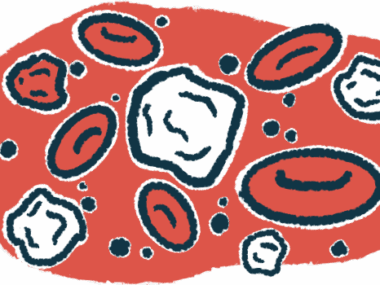Inflammatory Molecule IL-7 Linked to Sjögren’s Disease Activity, Inflammation
Written by |

Levels of the inflammatory molecule IL-7 were higher in the blood of people with Sjögren’s syndrome compared with healthy people and were linked to greater disease severity and indicators of inflammation, a study found.
A deeper review of literature relating to IL-7 and Sjögren’s across animal, cell cultures, and human studies also revealed increased IL-7 is linked to inflammatory processes that worsen Sjögren’s severity.
These findings support a role for IL-7 as a potential disease biomarker, but also as a therapeutic target for Sjögren’s, the researchers noted.
The study, “Association between IL-7 and primary Sjögren’s syndrome: A single-center study and a systematic scoping review,” was published in International Immunopharmacology.
An autoimmune condition, Sjögren’s syndrome is caused by erroneous immune attacks on the body’s own cells. Such attacks involve the activation of several immune cell types, including T- and B-cells.
IL-7 is a protein that acts on receptors, called IL-7R, present on T- and B-cell precursors to promote their development and maturation. Emerging evidence suggests a IL-7/IL-7R signaling impairment may be implicated in the progression of Sjögren’s.
Researchers in China investigated the potential role of IL-7 in Sjögren’s. The team first measured the levels of IL-7 and other inflammatory molecules in the blood of 58 Sjögren’s patients (49 women and nine men) and 30 healthy people, who served as controls, all of whom were recruited from the Changzheng Hospital from 2008 to 2018.
Results showed IL-7 blood levels were significantly higher in Sjögren’s patients compared with healthy controls, as were the levels of other inflammatory molecules, such as IL-4, IL-9, IL-10, IL-17, interferon-gamma, and interferon-alpha.
Several molecules were associated with a higher EULAR Sjögren’s syndrome disease activity index (ESSDAI), indicating their presence was linked to greater disease activity. Of them, IL-7 had the strongest link to ESSDAI scores.
IL-7 levels correlated with levels of several of the other measured molecules. It was also associated with the presence of multiple indicators of inflammation, including but not limited to, c-reactive protein, neutrophils (an immune cell type), immunoglobulins, fever, and lymph node swelling.
“We report, for the first time, the finding that serum [blood] IL-7 level is closely associated with almost all the inflammatory markers and systemic activity of [Sjögren’s],” the researchers wrote, noting that their “conclusions should be drawn cautiously and need to be confirmed by large-sized, multiple-center studies,” given that statistical analyses in the study did not account for other factors that could influence the results.
To further investigate the relationship between IL-7 and Sjögren’s, researchers reviewed 15 previously published articles on the topic, including studies in animals, cell cultures, and humans.
Investigators found the studies focused on three major points. First, they indicated that IL-7 levels were increased in the salivary glands, blood, and saliva of Sjögren’s patients. Its receptor, IL-7R, was usually present on T-cells where it was increased in the salivary glands, but decreased in blood.
Next, the studies revealed the salivary glands may be the primary source of this increased IL-7 in Sjögren’s. While it’s been proposed that IL-7 is produced by a set of cells called salivary gland epithelial cells, this hasn’t yet been validated, the researchers noted.
Lastly, the team found that IL-7 appears to play a key role in Sjögren’s disease activity, where it stimulated the activation of multiple immune cell types, leading to the release of pro-inflammatory molecules. In animal models, increased IL-7 was linked to disease worsening, whereas its blockade was associated with a relief from symptoms.
While “the causative relationship between increased IL-7 level in serum and development and severity of [Sjögren’s] cannot be confirmed,” findings nonetheless suggest “not only that IL-7 and soluble IL-7R are potential biomarkers for monitoring [Sjögren’s] activity, but also that targeting IL-7/IL7R signaling pathway may be a promising therapeutic strategy for [Sjögren’s] patients.”






